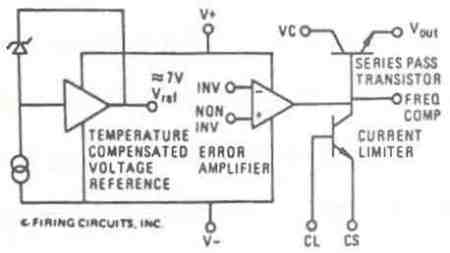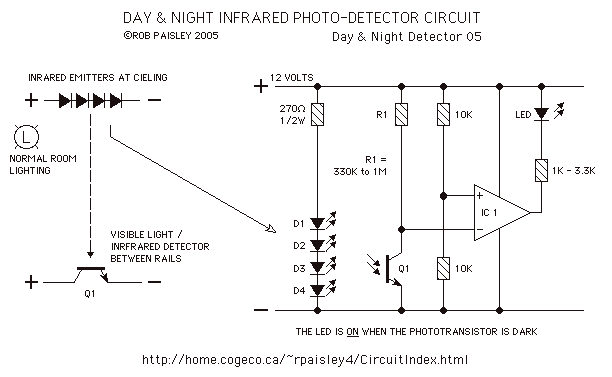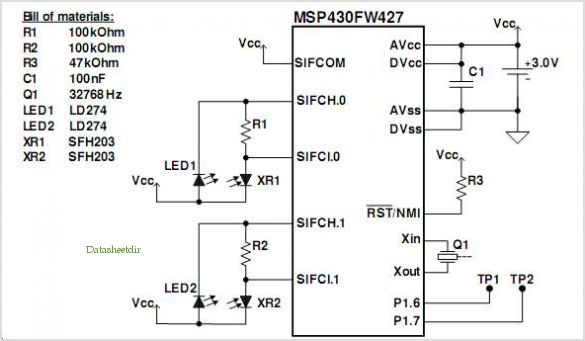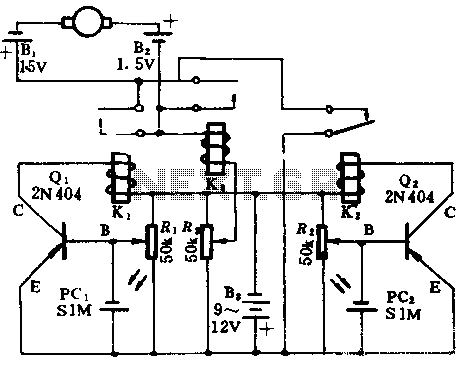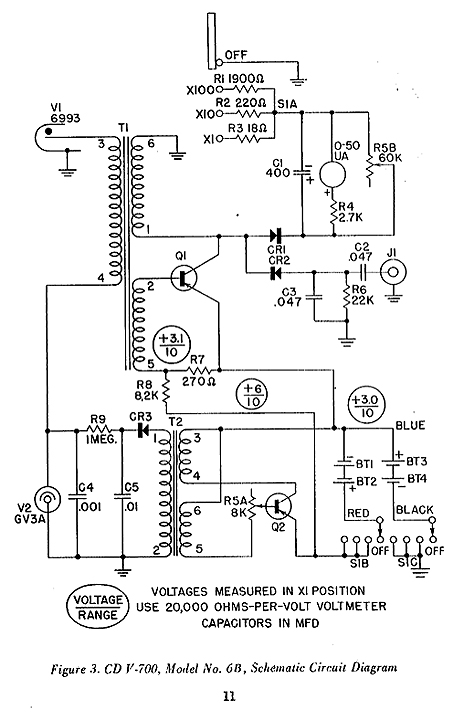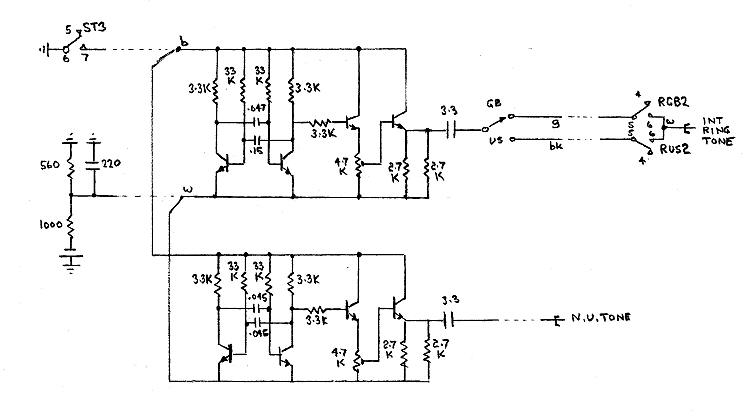
Detection for trains on model railway
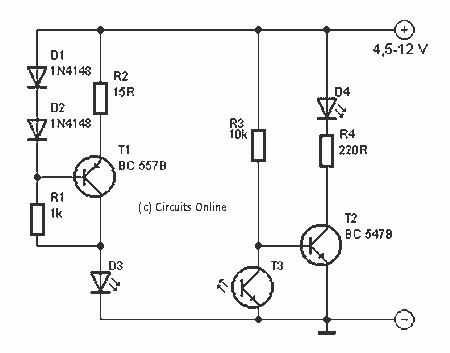
This light valve can be used for example to detect trains on model railway or a lap counter at the close racing. D3 receives a constant stream of power built around T1. When the light beam from D3 to T3 is not interrupted, led T3 and T2 is the basis of practically grounded. T2 not conduct and the LED is not lit. When the beam is interrupted, spert T3 and T2 conducts and the LED will light. Of course listen to other things like LED control between plus and the collector of T2. Please note the maximum load of 100 mA. The supply voltage may be between 4.5 and 12 volts. More: R1 = 1 kΩ R2 = 15 Ω R3 = 10 kΩ R4 = 220 Ω D1, D2 = 1N4148 D3 = infrared LED D4 = LED red T1 = BC 557B T2 = BC 547B T3 = 104 BP
This circuit functions as a light-based detection system suitable for applications such as model railway train detection or lap counting in racing scenarios. The primary component of the system is D3, an infrared LED, which emits a beam of infrared light. This light beam is directed towards T3, a phototransistor that acts as a light sensor.
The circuit operates with a supply voltage ranging from 4.5 to 12 volts, ensuring compatibility with various power sources. The maximum load for the output is specified at 100 mA, which is critical for maintaining the integrity of the components involved.
The transistor T1, a BC 557B, is configured to provide a constant current to D3, ensuring that the infrared LED operates continuously. Resistors R1 (1 kΩ) and R2 (15 Ω) are used to limit the current flowing through the circuit, protecting the components from excessive current that could lead to damage.
When the light beam emitted by D3 is uninterrupted, the base of transistors T2 (BC 547B) and T3 (104 BP) is effectively grounded, preventing T2 from conducting. As a result, the output LED (D4, a red LED) remains off. However, when the beam is interrupted—such as when a train passes through the detection zone—T3 begins to conduct, allowing current to flow through T2. This conduction activates the output LED, signaling the detection event.
Additional components include diodes D1 and D2 (1N4148), which are used for protection against reverse polarity and to ensure the stability of the circuit. Resistor R3 (10 kΩ) and R4 (220 Ω) are also strategically placed to assist in biasing the transistors and controlling the current flow within the circuit.
Overall, this light valve detection circuit is designed for simplicity and reliability, making it an effective solution for detecting moving objects in model railways or competitive racing environments.This light valve can be used for example to detect trains on model railway or a lap counter at the close racing. D3 receives a constant stream of power built around T1. When the light beam from D3 to T3 is not interrupted, led T3 and T2 is the basis of practically grounded.
T2 not conduct and the LED is not lit. When the beam is interrupted, spert T3 and T2 conducts and the LED will light. Of course listen to other things like LED control between plus and the collector of T2. Please note the maximum load of 100 mA. The supply voltage may be between 4.5 and 12 volts. R1 = 1 kW R2 = 15 ? R3 = 10 k R4 = 220 ? D1, D2 = 1N4148 D3 = infrared LED D4 = LED red T1 = BC 557B T2 = BC 547B T3 = 104 BP 🔗 External reference
This circuit functions as a light-based detection system suitable for applications such as model railway train detection or lap counting in racing scenarios. The primary component of the system is D3, an infrared LED, which emits a beam of infrared light. This light beam is directed towards T3, a phototransistor that acts as a light sensor.
The circuit operates with a supply voltage ranging from 4.5 to 12 volts, ensuring compatibility with various power sources. The maximum load for the output is specified at 100 mA, which is critical for maintaining the integrity of the components involved.
The transistor T1, a BC 557B, is configured to provide a constant current to D3, ensuring that the infrared LED operates continuously. Resistors R1 (1 kΩ) and R2 (15 Ω) are used to limit the current flowing through the circuit, protecting the components from excessive current that could lead to damage.
When the light beam emitted by D3 is uninterrupted, the base of transistors T2 (BC 547B) and T3 (104 BP) is effectively grounded, preventing T2 from conducting. As a result, the output LED (D4, a red LED) remains off. However, when the beam is interrupted—such as when a train passes through the detection zone—T3 begins to conduct, allowing current to flow through T2. This conduction activates the output LED, signaling the detection event.
Additional components include diodes D1 and D2 (1N4148), which are used for protection against reverse polarity and to ensure the stability of the circuit. Resistor R3 (10 kΩ) and R4 (220 Ω) are also strategically placed to assist in biasing the transistors and controlling the current flow within the circuit.
Overall, this light valve detection circuit is designed for simplicity and reliability, making it an effective solution for detecting moving objects in model railways or competitive racing environments.This light valve can be used for example to detect trains on model railway or a lap counter at the close racing. D3 receives a constant stream of power built around T1. When the light beam from D3 to T3 is not interrupted, led T3 and T2 is the basis of practically grounded.
T2 not conduct and the LED is not lit. When the beam is interrupted, spert T3 and T2 conducts and the LED will light. Of course listen to other things like LED control between plus and the collector of T2. Please note the maximum load of 100 mA. The supply voltage may be between 4.5 and 12 volts. R1 = 1 kW R2 = 15 ? R3 = 10 k R4 = 220 ? D1, D2 = 1N4148 D3 = infrared LED D4 = LED red T1 = BC 557B T2 = BC 547B T3 = 104 BP 🔗 External reference
